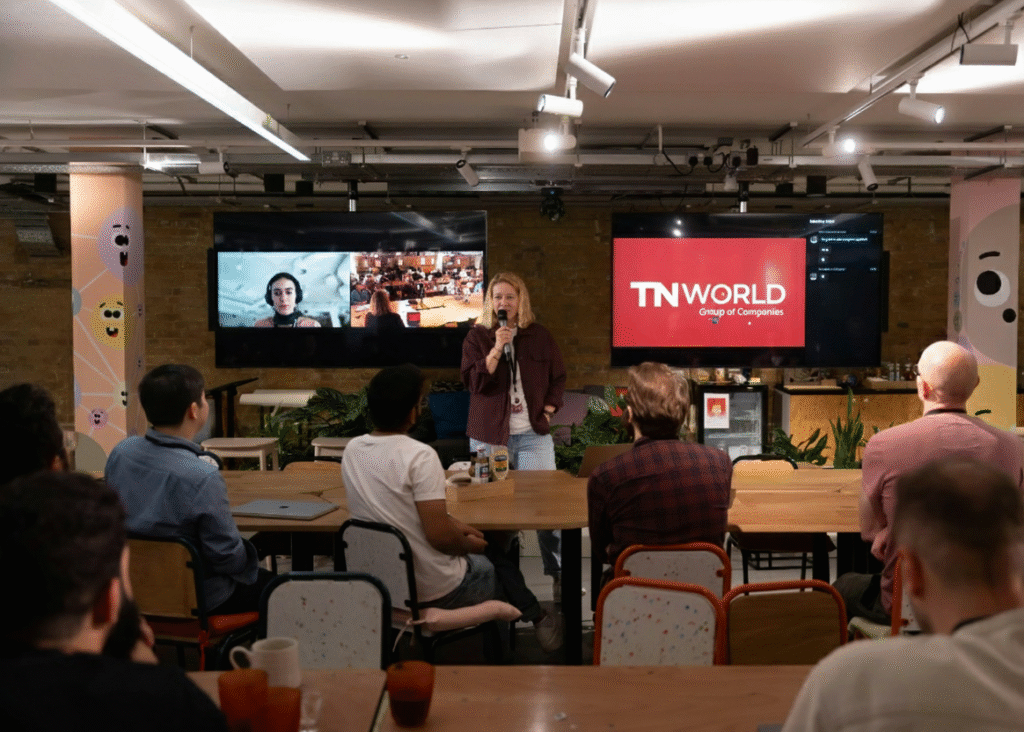Explore strategic HR practices for global expansion learn how to scale your team effectively, overcome challenges, and drive international business growth in 2025.

In an era where borders are blurring and markets are interconnecting at unprecedented speeds, global expansion has become a cornerstone for ambitious businesses seeking sustained growth. However, scaling your team internationally isn’t merely about opening new offices or hiring overseas talent it’s a complex endeavor that demands a robust strategic HR framework to navigate cultural diversities, regulatory landscapes, and operational challenges. For companies in 2025, where remote work and digital collaboration are norms, effective HR strategies ensure that expansion efforts translate into tangible success, fostering innovation, efficiency, and competitive advantage.
This comprehensive guide delves into the intricacies of strategic HR for global expansion, offering practical insights, proven methodologies, and real-world examples to help you scale your team seamlessly. From assessing readiness to implementing cutting-edge tools and measuring outcomes, we’ll cover the essential steps to build a resilient, high-performing global workforce. Whether you’re a startup venturing into new territories or an established enterprise optimizing international operations, these strategies will equip you to overcome obstacles and capitalize on opportunities in the global arena. By prioritizing people-centric approaches, you’ll not only comply with local norms but also cultivate a unified culture that drives long-term prosperity.
The Importance of Strategic HR in Global Expansion
Strategic HR serves as the linchpin in any global expansion initiative, aligning human capital with business objectives to ensure smooth transitions and scalable growth. Unlike traditional HR functions focused on administrative tasks, strategic HR involves forward-thinking planning, where talent management becomes a driver of international success. In today’s volatile economic climate, companies that integrate HR early in expansion plans are better positioned to mitigate risks and seize market opportunities.
Consider the statistics: by 2025, the global workforce is projected to include over 1 billion remote workers, with emerging markets like Asia and Africa contributing significantly to talent pools. This shift underscores the need for HR to adapt strategies that accommodate diverse work models, from hybrid setups to fully distributed teams. Effective scaling involves not just hiring more people but ensuring they are the right fit, equipped with skills that align with local market demands and company goals.
Moreover, strategic HR helps in cost management during expansion. Poor hiring decisions or compliance oversights can lead to substantial financial losses—fines for regulatory violations alone can reach millions in regions like the EU. By embedding HR in strategic planning, businesses can forecast talent needs, budget accurately, and implement retention programs that reduce turnover, which averages 15-20% higher in international settings due to cultural mismatches.
Beyond compliance and costs, strategic HR fosters innovation through diversity. Teams comprising individuals from varied backgrounds bring fresh perspectives, enhancing problem-solving and creativity. Reports indicate that diverse companies outperform peers by 35% in profitability, highlighting HR’s role in curating inclusive global teams. In essence, without a strategic HR backbone, global expansion risks becoming a fragmented effort, prone to inefficiencies and failures.
To illustrate, companies that involve HR from the outset report 25% faster market entry and higher employee engagement levels. This proactive involvement allows for tailored strategies that address specific expansion phases, from initial market research to post-launch optimization.
Benefits of Integrating HR in Expansion Plans
Early HR integration enables precise talent mapping, identifying gaps and sourcing candidates proactively. It also facilitates cultural alignment, reducing integration time by up to 30%. Financially, it optimizes compensation structures, balancing global standards with local competitiveness.
Common Pitfalls Without Strategic HR
Neglecting HR often leads to compliance breaches, high attrition, and misaligned teams. For instance, ignoring local labor laws can result in legal disputes, while overlooking cultural training may cause productivity dips.
HR’s Role in Driving Sustainable Growth
HR drives sustainability by promoting ethical practices, such as fair labor standards and DEI initiatives, which enhance brand reputation and attract top talent globally.
Assessing Your Organization’s Readiness for Global Scaling
Before embarking on global expansion, a thorough readiness assessment is imperative to identify strengths, weaknesses, and potential roadblocks. This involves evaluating internal capabilities, market conditions, and HR infrastructure to ensure alignment with expansion goals.
Start with an organizational audit: Review current HR processes, from recruitment to performance management, assessing their scalability. Can your systems handle multi-currency payroll or multilingual communications? Tools like SWOT analysis help pinpoint areas needing enhancement, such as upgrading to cloud-based HR software for global access.
Market research is equally vital. Analyze target regions for talent availability, labor costs, and economic stability. For example, expanding into Southeast Asia might offer cost advantages but requires navigating diverse visa regulations. Engage consultants or use data from sources like the World Bank to inform decisions.
Cultural readiness assessment ensures your company values resonate internationally. Conduct surveys to gauge employee openness to global roles and identify training needs. Financial readiness involves budgeting for relocation, compliance, and potential currency risks.
Finally, develop a roadmap with milestones, assigning HR leads to oversee talent aspects. This preparation minimizes surprises, setting a solid foundation for effective scaling.
In 2025, with AI influencing workforce dynamics, assess tech readiness too—ensure HR tools incorporate AI for predictive hiring and analytics.
Conducting a Talent Gap Analysis
Identify skills shortages by mapping required competencies against current workforce. Use tools like skills matrices to highlight needs in areas like digital marketing for new markets.
Evaluating Cultural and Operational Fit
Assess how company culture adapts to local norms, perhaps through pilot programs in target countries.
Financial and Resource Planning
Budget for HR investments, including training and tech, ensuring ROI through metrics like cost-per-hire reductions.
Developing a Global Talent Acquisition Strategy
A strong talent acquisition strategy is the engine of global scaling, focusing on attracting, selecting, and retaining top performers across borders.
Begin by defining your employer brand globally—highlight values like innovation and inclusivity through targeted campaigns on platforms like LinkedIn. Tailor messaging to regional preferences; for instance, emphasize work-life balance in Europe.
Leverage diverse sourcing channels: International job boards, university partnerships, and employee referrals. In emerging markets, tap local networks via events or social media.
Implement structured selection processes, using AI for resume screening but ensuring human oversight to avoid bias. Virtual interviews accommodate time zones, with assessments testing cultural fit and adaptability.
Offer competitive packages: Blend base pay with local perks, like housing allowances in high-cost cities. Mobility programs, including rotations, aid retention.
Track metrics like time-to-hire and diversity ratios to refine strategies, ensuring alignment with business growth.
Sourcing Talent from International Pools
Utilize platforms like Indeed Global or regional sites like Naukri in India for targeted outreach.
Building Inclusive Recruitment Practices
Adopt blind hiring and diverse panels to promote equity.
Retention Strategies for Global Hires
Provide career development paths and support networks to foster loyalty.
Navigating Legal and Compliance Challenges in Expansion
Global expansion amplifies compliance complexities, with varying labor laws posing significant risks if overlooked.
Key challenges include employment contracts, which must comply with local standards—e.g., indefinite terms in France versus at-will in the U.S. Taxation and payroll vary, with mandatory contributions in many countries.
Visa and immigration hurdles delay hires; partner with experts for streamlined processes. Data privacy laws like GDPR require secure handling of employee info.
To navigate, conduct due diligence per country, using EOR services for quick, compliant entry without entities. Regular audits and training keep teams updated.
In 2025, gig economy regulations add layers, demanding flexible contracts.
Understanding Regional Labor Laws
Research specifics, like EU worker protections or Asian overtime caps.
Using EOR and PEO Services
These handle compliance, allowing focus on core business.
Risk Mitigation Techniques
Implement insurance and contingency plans for geopolitical risks.
Fostering a Unified Company Culture Across Borders
A cohesive culture binds global teams, promoting collaboration and shared vision despite distances.
Define core values universally applicable, then adapt to local contexts—e.g., hierarchy in Asia versus flat structures in Scandinavia.
Communication is key: Use tools like Slack for real-time interaction, scheduling across time zones. Virtual team-building, like online games, builds rapport.
Promote inclusivity through DEI training, celebrating global holidays. Leadership must model behaviors, with regular feedback ensuring alignment.
Measure culture health via surveys, adjusting based on insights to maintain unity.
Promoting Cross-Cultural Communication
Train on nuances, encouraging empathy and active listening.
DEI Initiatives for Global Teams
Set quotas where appropriate, fostering diverse leadership.
Virtual Team-Building Activities
Host global events to strengthen bonds.
Implementing Effective Onboarding and Training Programs
Onboarding sets the tone for new hires, while training ensures ongoing development in a global context.
Design virtual onboarding with modules on company culture, tools, and local compliance. Assign buddies for support.
Training should be continuous, using e-learning for accessibility. Focus on skills like cross-cultural competence and digital literacy.
Tailor programs to roles, with leadership tracks for high-potentials. Track effectiveness through performance metrics.
Customized Onboarding for International Hires
Include relocation assistance and cultural acclimation.
Ongoing Professional Development
Offer certifications and mentorship programs.
Evaluating Training ROI
Use pre/post assessments to gauge impact.
Leveraging Technology for Global HR Management
Technology streamlines HR operations, enabling efficient management of dispersed teams.
HRIS like Workday integrate payroll, benefits, and analytics globally. AI tools predict talent needs and automate recruitment.
Collaboration platforms facilitate communication, while analytics provide insights for decision-making.
Choose scalable solutions with strong security for data protection.
Essential HR Tech Tools
From ADP for payroll to BambooHR for employee management.
AI in Talent Management
Enhances matching and personalization.
Data Security Considerations
Comply with global standards like GDPR.
Measuring Success: KPIs for Global Team Scaling
Tracking KPIs ensures expansion efforts yield results.
Key metrics include employee engagement scores, retention rates, and productivity indices. Diversity metrics gauge inclusivity.
Financial KPIs like cost-per-hire and ROI on training provide economic insights.
Regular reviews allow adjustments, ensuring sustained success.
Engagement and Retention Metrics
Surveys and turnover analysis.
Productivity and Performance Indicators
Output per employee, adjusted for regions.
Financial Impact Assessments
Revenue growth tied to team expansion.
Case Studies: Real-World Examples of Successful Scaling
Examining case studies reveals practical applications of strategic HR.
Yelp scaled its ER function using HR Acuity, improving reporting and operations. Worldsensing partnered with Oyster to expand across continents, unifying employee experiences.
Asahi Europe transformed HR with Agile, enhancing business operations. These examples show how tailored HR strategies drive global success.
Tech Sector Innovations
Companies like Remote aid in building global teams securely.
Manufacturing and Retail Expansions
Focus on automation and compliance for efficiency.
Lessons Learned from Failures
Adapt strategies based on past missteps, like cultural oversights.
Future Trends in Strategic HR for Global Growth
Looking to 2025 and beyond, HR trends will shape expansion.
AI and automation will dominate, with skills-based hiring rising. The green transition will create 18 million jobs, demanding reskilling. Employee well-being focuses will enhance retention.
Gen Z’s preferences for purpose-driven work will influence strategies.
Prepare by embracing flexible models and continuous learning.
AI-Driven HR Transformations
Personalized experiences and predictive analytics.
Sustainability in Talent Strategies
Align with ESG goals for attraction.
Adapting to Generational Shifts
Balance needs of diverse age groups.
In conclusion, strategic HR is indispensable for scaling teams effectively during global expansion. By implementing these practices, your organization can achieve sustainable growth and a thriving international presence.
Discover the Future. Explore Our World.
Trend Nova World: Uniting Innovation






